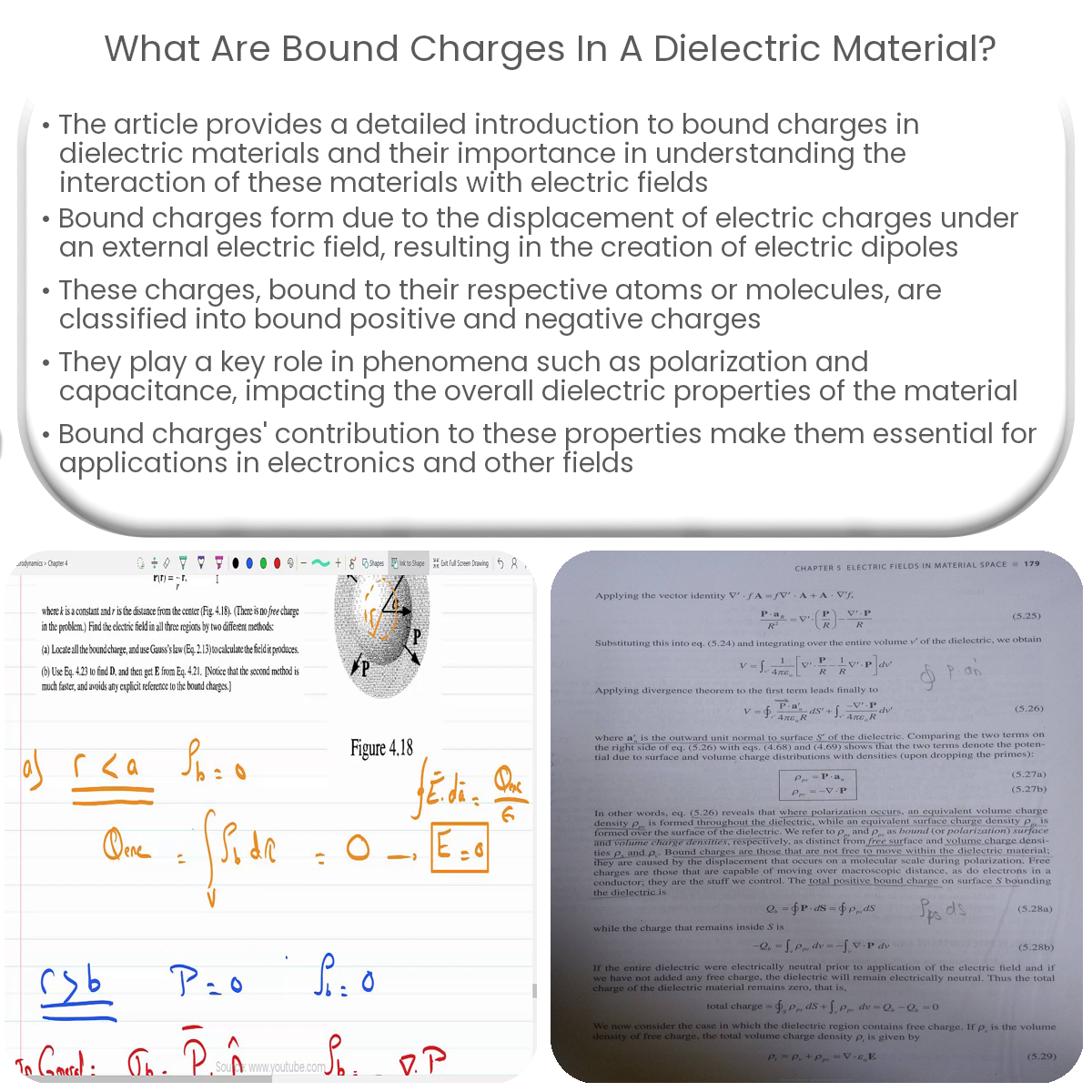Bound charges in dielectrics are displaced charges that form dipoles under an external electric field and contribute to the material’s polarization.
Introduction to Bound Charges in Dielectrics
Bound charges are an essential concept in the study of dielectric materials and their interaction with electric fields. In this article, we will discuss what bound charges are, how they form in dielectric materials, and their significance in understanding the behavior of dielectrics under electric fields.
Dielectric Materials and Electric Fields
Dielectric materials are insulating substances that do not allow the free flow of electric current. When a dielectric is subjected to an external electric field, the electric charges within the material undergo a slight displacement, resulting in electric polarization.
Formation of Bound Charges
Bound charges in dielectric materials are the result of the displacement of electric charges under the influence of an external electric field. This displacement causes a separation of positive and negative charges, leading to the formation of electric dipoles. The charges at the ends of these dipoles are called bound charges because they are not free to move through the material like free charges in conductors. In other words, they are bound to their respective atoms or molecules.
Types of Bound Charges
There are two types of bound charges in dielectric materials:
- Bound Positive Charges: These charges are associated with the positively charged atomic nuclei that are displaced slightly towards the direction of the external electric field. Bound positive charges are immobile and cannot move through the material.
- Bound Negative Charges: These charges are associated with the negatively charged electrons that are displaced slightly away from the direction of the external electric field. Like bound positive charges, bound negative charges are also immobile and cannot move through the material.
Significance of Bound Charges
Bound charges play a vital role in understanding the behavior of dielectric materials under the influence of electric fields:
- Polarization: The displacement of bound charges in dielectrics is responsible for the polarization phenomenon, which affects the overall electric field within the material.
- Capacitance: The presence of bound charges in dielectric materials contributes to the capacitance of capacitors, as the charge separation allows for more energy storage.
- Dielectric Properties: The behavior of bound charges under electric fields helps to determine various dielectric properties such as dielectric constant, dielectric strength, and dielectric loss.
In conclusion, bound charges are an essential aspect of dielectric materials and their response to electric fields. They contribute significantly to the material’s polarization, capacitance, and overall dielectric properties, making them crucial for various applications in electronics and other fields.


